Climate for conflict
Fighting to survive in Somalia, once vibrant and green, now plagued by intense drought
By LAURA HEATON and NICHOLE SOBECKI
"Climate for Conflict" is a reporting project by The GroundTruth Project in collaboration with ABC News. The report is part of GroundTruth's series "Living Proof: The Human Toll of Climate Change” and GroundTruth reporting fellows Laura Heaton and Nichole Sobecki worked together for 18 months, making numerous trips to Somalia, the Dadaab refugee camp in Kenya, as shown on the map, and reporting from two global conferences on climate change in Paris and Marrakech. Watch the report on ABC News "Nightline" HERE and in the video player below. To hear the podcast visit The GroundTruth Project and for further reporting see this month’s Foreign Policy magazine.
Daud Mohamed lives a fragile existence, wholly dependent on rain.
At his homestead in Somalia where we camped one night, his nine children were busy with chores as the sun was coming up: feeding the baby goat, collecting drinking water an hour’s walk away, and mixing up porridge in plastic mugs for breakfast. Mohamed has managed to keep a sense of normalcy at his rural homestead a two-hour drive from the nearest village. But he said the situation is anything but normal.
“I’ve never seen this kind of a drought that has killed our animals. It’s the worst one,” Mohamed said, his grey goatee making him look older than his 45 years. He has just one goat and a sickly calf left, he added.
Down the hill from Mohamed’s house is a clearing where he used to grow vegetables for his family and grass for his goats and cows. The soil is now dried into a wide latticework of deep cracks. At one end of the clearing stand two large trees. Many branches have been unceremoniously cut for firewood, leaving jagged stubs. But their broad trunks attest to their survival: droughts typically hit this region every few years, so these trees have withstood many lean seasons.
Mohamed walked us to the far end of the beige expanse and looked glumly at the skeleton of one of his last cows. The unforgiving sun had already bleached is ribs white. “They didn’t get enough food, and people were depending on animal’s milk and meat. If animals died, then human beings will also die,” Mohamed said.
At his homestead in Somalia where we camped one night, his nine children were busy with chores as the sun was coming up: feeding the baby goat, collecting drinking water an hour’s walk away, and mixing up porridge in plastic mugs for breakfast. Mohamed has managed to keep a sense of normalcy at his rural homestead a two-hour drive from the nearest village. But he said the situation is anything but normal.
“I’ve never seen this kind of a drought that has killed our animals. It’s the worst one,” Mohamed said, his grey goatee making him look older than his 45 years. He has just one goat and a sickly calf left, he added.
Down the hill from Mohamed’s house is a clearing where he used to grow vegetables for his family and grass for his goats and cows. The soil is now dried into a wide latticework of deep cracks. At one end of the clearing stand two large trees. Many branches have been unceremoniously cut for firewood, leaving jagged stubs. But their broad trunks attest to their survival: droughts typically hit this region every few years, so these trees have withstood many lean seasons.
Mohamed walked us to the far end of the beige expanse and looked glumly at the skeleton of one of his last cows. The unforgiving sun had already bleached is ribs white. “They didn’t get enough food, and people were depending on animal’s milk and meat. If animals died, then human beings will also die,” Mohamed said.

Photo credit: Nichole Sobecki
Mohamed said he thinks that a current law in Somaliland that bans cutting trees and charcoal production, is a good idea.
“Those trees used to help our animals. Now it looks like a desert,” he said. But he recognizes that planning ahead -- even as a single father with a brood ranging in age from toddler to teenager -- can be a luxury.
“If you have a family and you lose your livestock and there is drought, you will do anything to feed the children,” Mohamed said.
That is part of the reason why those two last trees on his parched pasture are starting to look like his only hope, he said.
Mohamed said he thinks that a current law in Somaliland that bans cutting trees and charcoal production, is a good idea.
“Those trees used to help our animals. Now it looks like a desert,” he said. But he recognizes that planning ahead -- even as a single father with a brood ranging in age from toddler to teenager -- can be a luxury.
“If you have a family and you lose your livestock and there is drought, you will do anything to feed the children,” Mohamed said.
That is part of the reason why those two last trees on his parched pasture are starting to look like his only hope, he said.
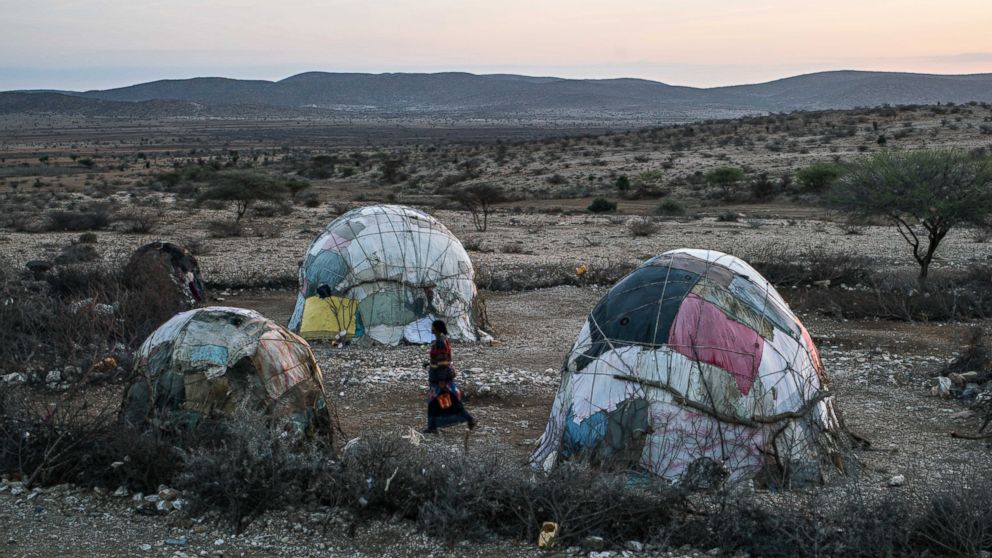
Photo credit: Nichole Sobecki
Across the global scientific community, there’s broad consensus about the reality of climate change. The Department of Defense first highlighted the security threat of global warming in 2010, calling it “an accelerant” for conflict. Yet with his tweets and executive orders, President Donald Trump has catapulted climate change skepticism into the mainstream. But for many people on the planet, like Daud Mohamed, the debate is moot: life is fundamentally changing right now.
More than six million Somalian people are currently in urgent need of assistance, according to the United Nations, which has called the refugee crisis the worst humanitarian crisis since World War II.
Across the global scientific community, there’s broad consensus about the reality of climate change. The Department of Defense first highlighted the security threat of global warming in 2010, calling it “an accelerant” for conflict. Yet with his tweets and executive orders, President Donald Trump has catapulted climate change skepticism into the mainstream. But for many people on the planet, like Daud Mohamed, the debate is moot: life is fundamentally changing right now.
More than six million Somalian people are currently in urgent need of assistance, according to the United Nations, which has called the refugee crisis the worst humanitarian crisis since World War II.
Most Americans first heard of Somalia when the country suffered a severe famine in the late 1980s.
The country once again made international headlines because of an incident known as Black Hawk Down in 1993, when 18 U.S. soldiers were killed in the streets of Mogadishu. The killings were later portrayed in an Academy Award-winning film of the same name.
The country occasionally makes headlines because of the pirates who trawl the coastline awaiting foreign cargo ships that they can hold hostage for massive ransoms. On land, reporters regularly recount the suffering of communities who still live under the ruthless rule of al-Shabab, a militant group aligned with Al Qaeda.

Photo credit: Nichole Sobecki
My reporting partner, photographer Nichole Sobecki, and I came to Somalia to look into another grim phenomenon, however. Scientists now believe that Somalia is one of the most vulnerable places in the world due to climate change. News stories about the war-torn country rarely highlights this link, but much of the violence in Somalia stems from environmental issues and resource scarcity -- and those underlying causes are only getting worse.
“With these weather patterns, Somalia or Somalis will not survive,” said Somali environmental activist Fatima Jibrell. “Maybe the land, a piece of desert called Somalia, will exist on the map of the world, but Somalis cannot survive.”
Yet just 40 years ago, Somalia seemed to be on a different trajectory.
My reporting partner, photographer Nichole Sobecki, and I came to Somalia to look into another grim phenomenon, however. Scientists now believe that Somalia is one of the most vulnerable places in the world due to climate change. News stories about the war-torn country rarely highlights this link, but much of the violence in Somalia stems from environmental issues and resource scarcity -- and those underlying causes are only getting worse.
“With these weather patterns, Somalia or Somalis will not survive,” said Somali environmental activist Fatima Jibrell. “Maybe the land, a piece of desert called Somalia, will exist on the map of the world, but Somalis cannot survive.”
Yet just 40 years ago, Somalia seemed to be on a different trajectory.
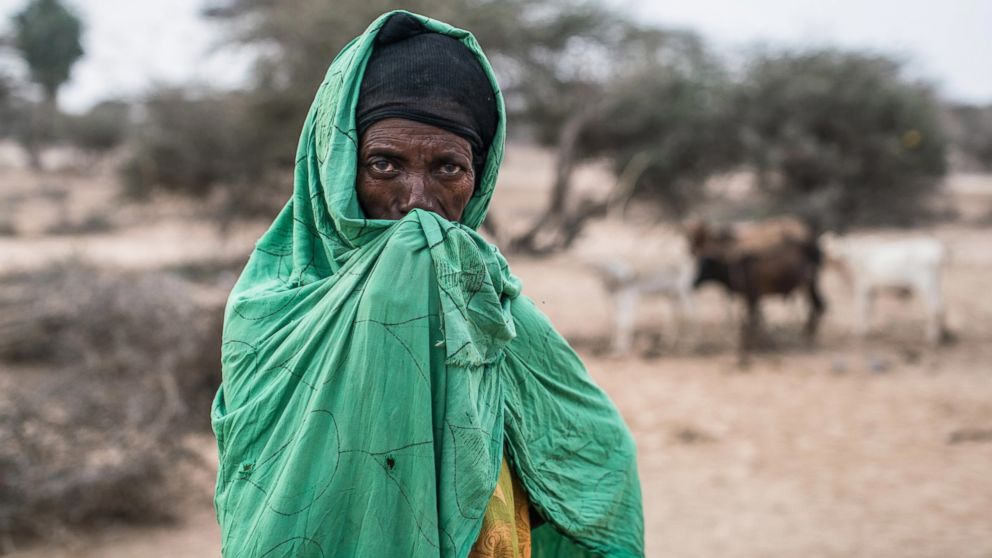
Photo credit: Nichole Sobecki
The UN held their first environmental conference in Stockholm in 1972, but it wasn’t until the late 1980s that the Intergovernmental Panel on Climate Change (IPCC) was formed and the science of climate change started to be discussed as a global issue.
However, Somalia’s leaders had a deep appreciation for their fragile relationship with the environment starting in the 1970s after a punishing drought. At the time, the government saw that safeguarding their natural resources had to be a priority. A quarter of a million nomadic people lost their livestock and became desperately poor in 1974 and 1975, according to Somalia expert Ioan Lewis. It was essentially the equivalent of going bankrupt, having your car stolen and your house burning down all at once. For these people, life became focused on survival.
With support from the U.S. during the Cold War, Somali President Siad Barre created the National Range Agency to manage the country’s natural resources. The Range Agency’s leaders had the ear of the president, the largest budget of any government department, and eventually more than 2,000 people on the payroll.
One of the foreign experts drawn to this work at the National Range Agency was a British ecologist named Dr. Murray Watson.
The UN held their first environmental conference in Stockholm in 1972, but it wasn’t until the late 1980s that the Intergovernmental Panel on Climate Change (IPCC) was formed and the science of climate change started to be discussed as a global issue.
However, Somalia’s leaders had a deep appreciation for their fragile relationship with the environment starting in the 1970s after a punishing drought. At the time, the government saw that safeguarding their natural resources had to be a priority. A quarter of a million nomadic people lost their livestock and became desperately poor in 1974 and 1975, according to Somalia expert Ioan Lewis. It was essentially the equivalent of going bankrupt, having your car stolen and your house burning down all at once. For these people, life became focused on survival.
With support from the U.S. during the Cold War, Somali President Siad Barre created the National Range Agency to manage the country’s natural resources. The Range Agency’s leaders had the ear of the president, the largest budget of any government department, and eventually more than 2,000 people on the payroll.
One of the foreign experts drawn to this work at the National Range Agency was a British ecologist named Dr. Murray Watson.
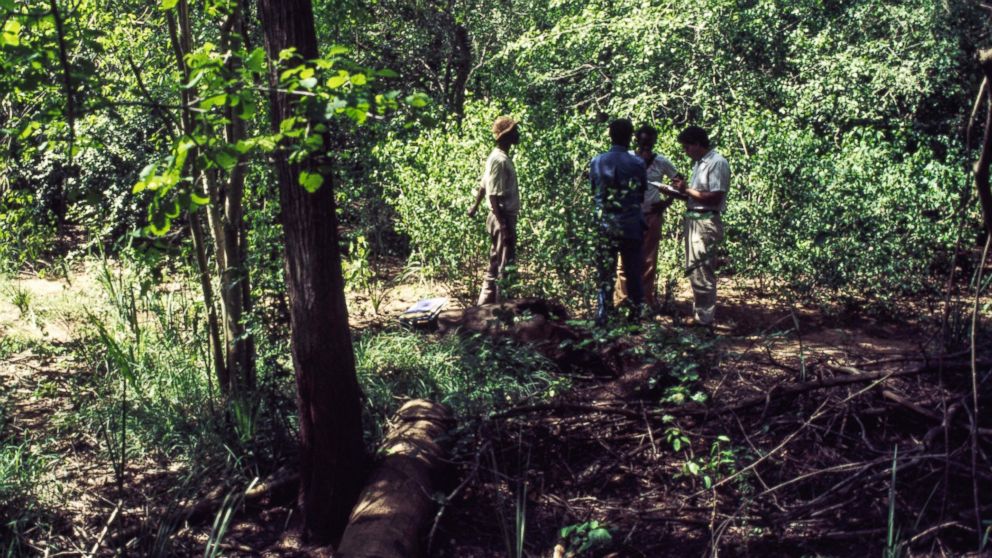
Photo credit: Courtesy Resource Management and Research archives
Watson had learned to fly while studying wildebeest migrations in the Serengeti for his doctorate at Cambridge University. He moved to Kenya, bought a Piper Super Cub two-seater plane, and began tinkering with a rig of measuring sticks, an altimeter and a camera to take aerial photographs to document wildlife.
Watson arrived in Mogadishu in 1978, just as the Range Agency was starting its work. Through the rest of the 1970s and ‘80s, Watson led a small team of scientists in carrying out the most comprehensive land survey of Somalia in the country’s history. They crisscrossed the country by Landrover and bush plane, photographing and studying the environment at more than a thousand sites.
But in 1991, that momentum came to an abrupt halt. Rebels toppled President Barre and then turned on each other, plunging the country in civil war. Thousands of people were killed in street battles in the city. The rebels looted and destroyed businesses and government buildings.
But Watson somehow managed to make his way across the city amid the firefights and rescue the agency’s maps, photographs, and field notes. He snuck some 15,000 environmental documents out of the country in a bush plane.
Watson had learned to fly while studying wildebeest migrations in the Serengeti for his doctorate at Cambridge University. He moved to Kenya, bought a Piper Super Cub two-seater plane, and began tinkering with a rig of measuring sticks, an altimeter and a camera to take aerial photographs to document wildlife.
Watson arrived in Mogadishu in 1978, just as the Range Agency was starting its work. Through the rest of the 1970s and ‘80s, Watson led a small team of scientists in carrying out the most comprehensive land survey of Somalia in the country’s history. They crisscrossed the country by Landrover and bush plane, photographing and studying the environment at more than a thousand sites.
But in 1991, that momentum came to an abrupt halt. Rebels toppled President Barre and then turned on each other, plunging the country in civil war. Thousands of people were killed in street battles in the city. The rebels looted and destroyed businesses and government buildings.
But Watson somehow managed to make his way across the city amid the firefights and rescue the agency’s maps, photographs, and field notes. He snuck some 15,000 environmental documents out of the country in a bush plane.
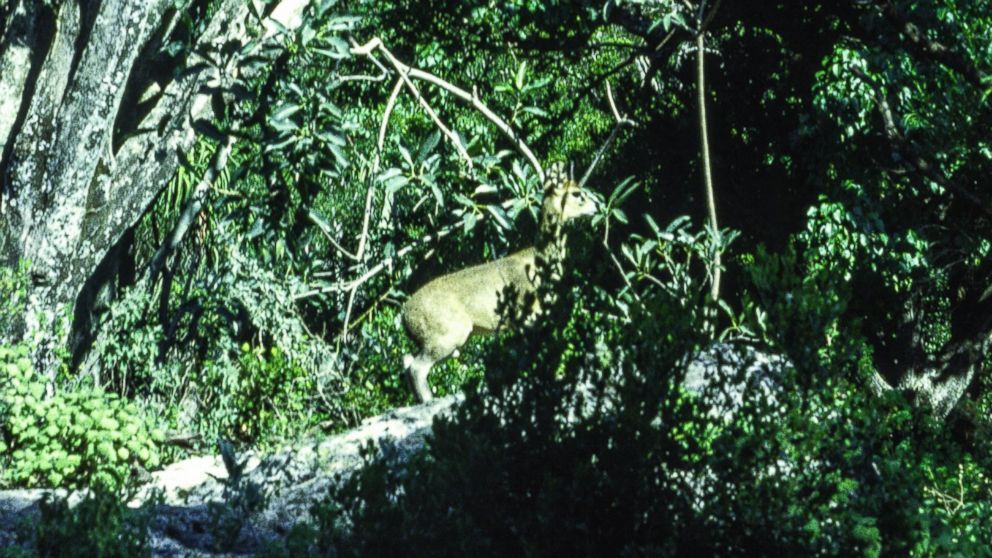
Photo credit: Courtesy Resource Management and Research archives
As Range Agency staff fled the chaos and accomplished Somali scientists ending up in refugee camps, they left behind everything they held dear, including university diplomas, wedding photos and children’s books.
“We always thought we would go back,” said Dr. Abdullahi Ahmed Karani. He served as the first and longtime director of the National Range Agency, and he fled Somalia in 1991. He eventually settled in Baltimore and is now almost 80 years old.
As the Somali government collapsed and terrorism became an even larger problem, no one could enforce the ban on charcoal production and deforestation. Illegal fishing and dumping of toxic waste increased as foreign companies took advantage of Somalia’s unpatrolled waters. Meanwhile, as Somalia’s climate began to change, increasingly frequent droughts made people even more vulnerable to armed groups like Al-Shabab.
In contrast, Watson’s land survey provides a rare, detailed picture of a country before the past 26 years of conflict and environmental destruction.
But in 2008, the conflict caught up to Watson. While conducting another environmental survey, Watson and his Kenyan colleague Patrick Amukhuma were ambushed and kidnapped. Watson has been missing ever since, and what happened to him remains a mystery to his family to this day.
But Watson’s work has lived on. The Somali government has begun finding its footing after a quarter-century of war, and researchers believe Watson’s land survey -- now housed in a farmhouse in Britain -- could help show precisely how and why the country’s environment changed. It could also possibly offer clues about what can be done to restore it.
As Range Agency staff fled the chaos and accomplished Somali scientists ending up in refugee camps, they left behind everything they held dear, including university diplomas, wedding photos and children’s books.
“We always thought we would go back,” said Dr. Abdullahi Ahmed Karani. He served as the first and longtime director of the National Range Agency, and he fled Somalia in 1991. He eventually settled in Baltimore and is now almost 80 years old.
As the Somali government collapsed and terrorism became an even larger problem, no one could enforce the ban on charcoal production and deforestation. Illegal fishing and dumping of toxic waste increased as foreign companies took advantage of Somalia’s unpatrolled waters. Meanwhile, as Somalia’s climate began to change, increasingly frequent droughts made people even more vulnerable to armed groups like Al-Shabab.
In contrast, Watson’s land survey provides a rare, detailed picture of a country before the past 26 years of conflict and environmental destruction.
But in 2008, the conflict caught up to Watson. While conducting another environmental survey, Watson and his Kenyan colleague Patrick Amukhuma were ambushed and kidnapped. Watson has been missing ever since, and what happened to him remains a mystery to his family to this day.
But Watson’s work has lived on. The Somali government has begun finding its footing after a quarter-century of war, and researchers believe Watson’s land survey -- now housed in a farmhouse in Britain -- could help show precisely how and why the country’s environment changed. It could also possibly offer clues about what can be done to restore it.

Photo credit: Nichole Sobecki
But many Somalis have already decided Somalia is no longer a viable home.
Another terrible drought hit in 2011, sparking a mass exodus. According to the UN, a quarter of a million people died and almost a million more crossed into neighboring countries. Tens of thousands of those fleeing their homes finally found relief in Kenya at one of the world’s largest refugee camps, Dadaab.
When their farm failed, Mohamed Abukar and his wife, Habiba, took their two young daughters and walked for 27 days to the camp across desolate southern Somalia -- land that in Watson’s old photographs appears verdant and green, with one of the country’s old-growth forests and even a national park. Today, the region is controlled by al-Shabab, who have deforested much of it to supply their lucrative charcoal trade, according to the UN’s Food and Agriculture Organization.
Now a father of five, including two young sons, Abukar knows his family can’t stay in the refugee camp in Kenya forever. But he also can’t imagine returning to Somalia.
Abukar said that in Somalia, al-Shabab recruits boys at the madrassas or religious schools.
“I am fearful that they will be recruited. First, there is no school other than those run and controlled by [al-Shabab],” he said.
“They can radicalize you because you are poor and don’t have anything,” Abukar added, explaining that extremists sometimes block aid from reaching these areas to coerce people into supporting them.
But many Somalis have already decided Somalia is no longer a viable home.
Another terrible drought hit in 2011, sparking a mass exodus. According to the UN, a quarter of a million people died and almost a million more crossed into neighboring countries. Tens of thousands of those fleeing their homes finally found relief in Kenya at one of the world’s largest refugee camps, Dadaab.
When their farm failed, Mohamed Abukar and his wife, Habiba, took their two young daughters and walked for 27 days to the camp across desolate southern Somalia -- land that in Watson’s old photographs appears verdant and green, with one of the country’s old-growth forests and even a national park. Today, the region is controlled by al-Shabab, who have deforested much of it to supply their lucrative charcoal trade, according to the UN’s Food and Agriculture Organization.
Now a father of five, including two young sons, Abukar knows his family can’t stay in the refugee camp in Kenya forever. But he also can’t imagine returning to Somalia.
Abukar said that in Somalia, al-Shabab recruits boys at the madrassas or religious schools.
“I am fearful that they will be recruited. First, there is no school other than those run and controlled by [al-Shabab],” he said.
“They can radicalize you because you are poor and don’t have anything,” Abukar added, explaining that extremists sometimes block aid from reaching these areas to coerce people into supporting them.
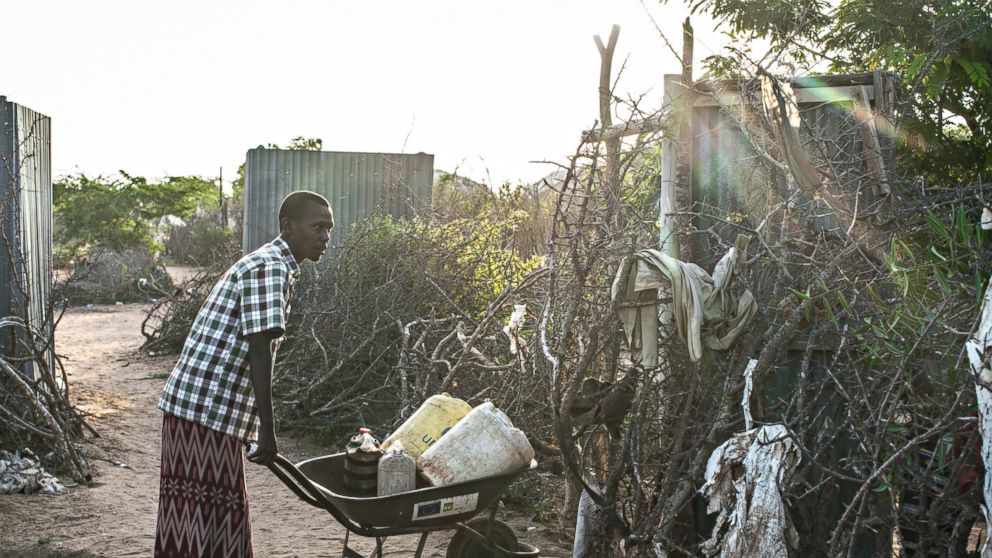
Photo credit: Nichole Sobecki
Indeed, aid agencies could have alleviated the suffering from the drought. But al-Shabab wanted to leave people vulnerable, “to attract the hungry people, knowing too well that people facing starvation will fall for anything,” Abukar said. He told us this fear of starvation is one of the concerns that runs through his mind at night while his family sleeps.
“Even if Somalia has security problems, if someone has to die, it’s best if he dies while in good shape other than dying of hunger,” he said.
Abukar vows he’ll never return to Somalia. Since the war broke out in 1991, millions more have also left, making new lives for themselves elsewhere in eastern Africa or boarding rickety boats bound for the West at the mercy of smugglers.
Indeed, aid agencies could have alleviated the suffering from the drought. But al-Shabab wanted to leave people vulnerable, “to attract the hungry people, knowing too well that people facing starvation will fall for anything,” Abukar said. He told us this fear of starvation is one of the concerns that runs through his mind at night while his family sleeps.
“Even if Somalia has security problems, if someone has to die, it’s best if he dies while in good shape other than dying of hunger,” he said.
Abukar vows he’ll never return to Somalia. Since the war broke out in 1991, millions more have also left, making new lives for themselves elsewhere in eastern Africa or boarding rickety boats bound for the West at the mercy of smugglers.

Environmental activist Fatima Jibrell had left Somalia too. She moved to the U.S., but decided to come back to lead Adeso, the organization she founded in 1991. Her organization focuses on creating jobs and rehabilitating the degraded land. But she questions whether that approach will ultimately work, blaming desperation that has been exacerbated by a changing environment and dwindling resources.
“It’s going to take us to wars where we kill and maim each other. Sadly, I think that is the way we will choose. Not intelligently, but by not doing anything -- that’s the choice we will make,” said Jibrell. “The other choice is harder, but it’s doable. It comes with intelligent people coming together.”
Jibrell’s feelings about the future are peppered with both optimistic and grim predictions. But she said she is committed to her work, even as she approaches 70.
“We are alive, and we are thinking beings. And it’s not in our nature, I think, to give up,” Jibrell reflected. “Nobody likes to die sitting.”
ADDITIONAL CREDITS:
Executive Producer ROXANNA SHERWOOD
Lead Editorial Producer ASHLEY LOUSZKO
Senior Digital Producer ERIC JOHNSON
Digital Producer LAUREN EFFRON
Video Editor STEPHANIE RUTKOWSKI
Editor KAELYN FORDE
“It’s going to take us to wars where we kill and maim each other. Sadly, I think that is the way we will choose. Not intelligently, but by not doing anything -- that’s the choice we will make,” said Jibrell. “The other choice is harder, but it’s doable. It comes with intelligent people coming together.”
Jibrell’s feelings about the future are peppered with both optimistic and grim predictions. But she said she is committed to her work, even as she approaches 70.
“We are alive, and we are thinking beings. And it’s not in our nature, I think, to give up,” Jibrell reflected. “Nobody likes to die sitting.”
ADDITIONAL CREDITS:
Executive Producer ROXANNA SHERWOOD
Lead Editorial Producer ASHLEY LOUSZKO
Senior Digital Producer ERIC JOHNSON
Digital Producer LAUREN EFFRON
Video Editor STEPHANIE RUTKOWSKI
Editor KAELYN FORDE
